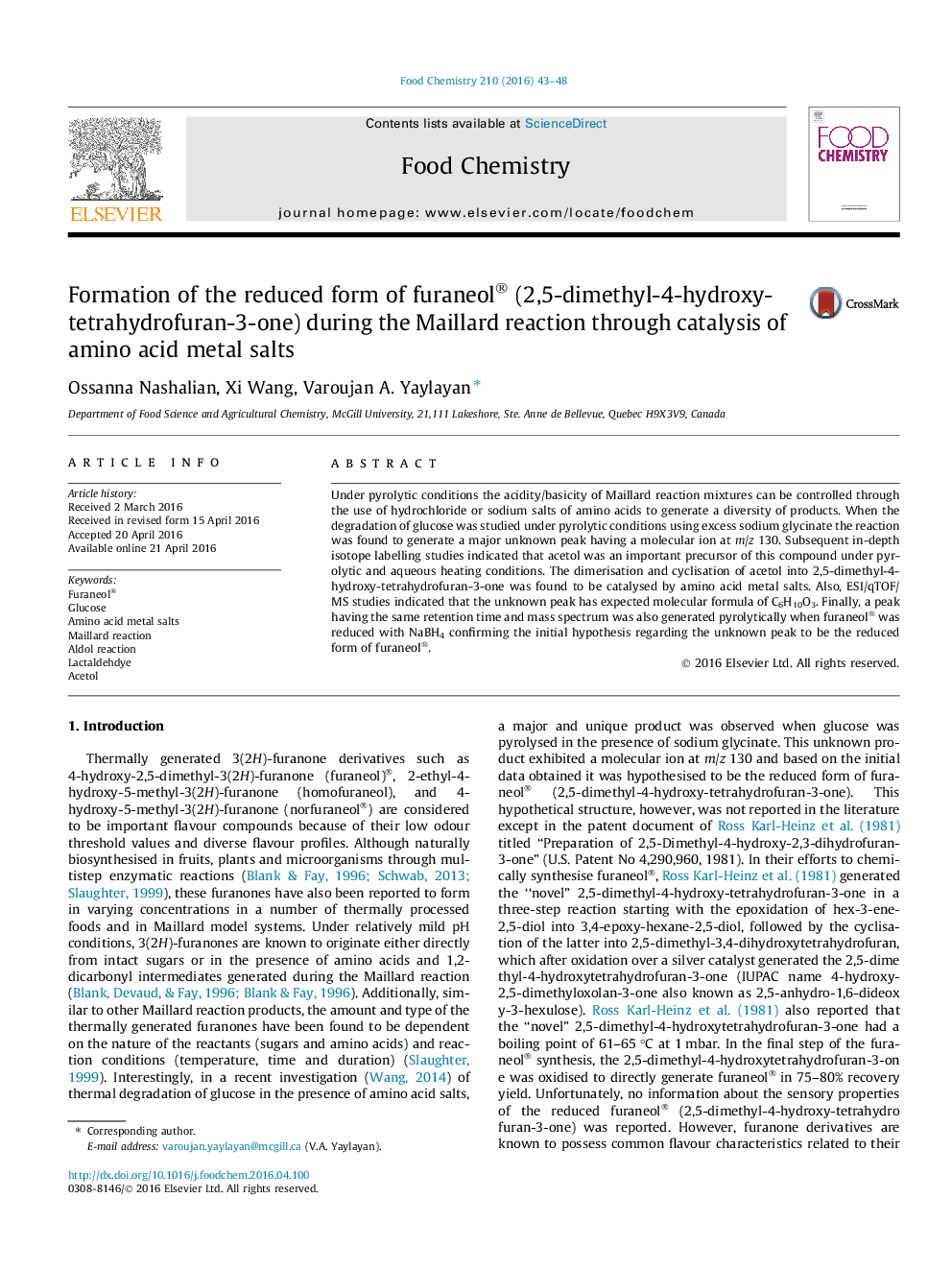| Article ID | Journal | Published Year | Pages | File Type |
|---|---|---|---|---|
| 7587992 | Food Chemistry | 2016 | 6 Pages |
Abstract
Under pyrolytic conditions the acidity/basicity of Maillard reaction mixtures can be controlled through the use of hydrochloride or sodium salts of amino acids to generate a diversity of products. When the degradation of glucose was studied under pyrolytic conditions using excess sodium glycinate the reaction was found to generate a major unknown peak having a molecular ion at m/z 130. Subsequent in-depth isotope labelling studies indicated that acetol was an important precursor of this compound under pyrolytic and aqueous heating conditions. The dimerisation and cyclisation of acetol into 2,5-dimethyl-4-hydroxy-tetrahydrofuran-3-one was found to be catalysed by amino acid metal salts. Also, ESI/qTOF/MS studies indicated that the unknown peak has expected molecular formula of C6H10O3. Finally, a peak having the same retention time and mass spectrum was also generated pyrolytically when furaneol® was reduced with NaBH4 confirming the initial hypothesis regarding the unknown peak to be the reduced form of furaneol®.
Related Topics
Physical Sciences and Engineering
Chemistry
Analytical Chemistry
Authors
Ossanna Nashalian, Xi Wang, Varoujan A. Yaylayan,
